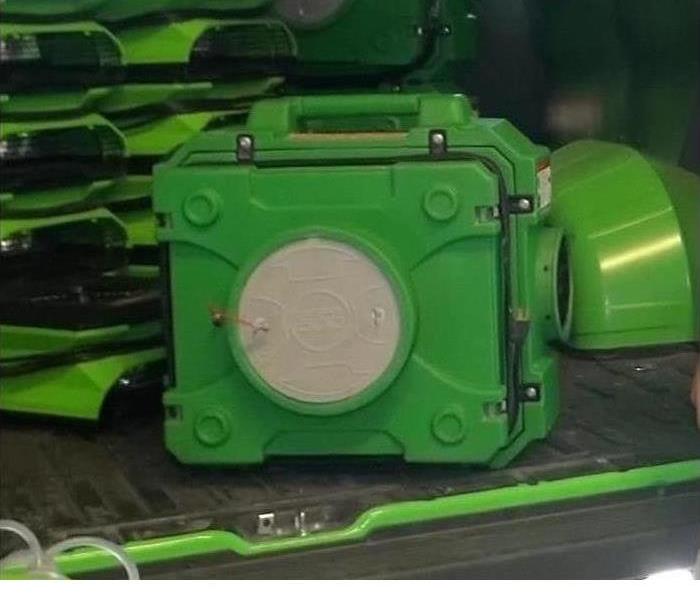How Do Air Purifiers Remove Mold Spores?
5/10/2021 (Permalink)
 SERVPRO has a variety of tools and equipment like this air scrubber to remove mold damage from your home.
SERVPRO has a variety of tools and equipment like this air scrubber to remove mold damage from your home.
A variety of air filtration systems can reduce the presence of mold spores in interior air. Though purification systems work in different ways, they each have features that are helpful for preventing mold growth at a residence.
Filter Type
Fungus spores range in size from as small as 3 microns to as large as 100 microns. High-Efficiency Particulate Air (HEPA) filters are the most effective, and have several requirements:
- Remove 99.97 percent of airborne particles
- Filter particles down to 0.3 microns
- Labeled "True HEPA" and not "HEPA Type"
As most spores are larger than 2 microns, you may be able to save money by purchasing a HEPA Type filter. These filtration units will not eliminate smaller contaminants.
Room Size
When choosing a purification system, it is also important to factor in the square footage of the space in which you want to filter air. Here are a few guidelines for selecting an air filtration system:
- Small room purifiers filter air in spaces up to about 300 square feet
- Medium-to-large room purifiers filter air in spaces ranging from about 300 to 600 square feet
- Large to extra-large room purifiers filter air in spaces up to or over 1,000 square feet
It may be necessary to purchase more than one purifier to use throughout a home. You may also periodically relocate a unit for more thorough filtration results.
Operation and Maintenance
Check to see whether the purifier you are considering contains additional systems. Some units feature antimicrobial treatments or methods for breaking down particles. You should also determine whether a filter can be cleaned and reused or will need to be replaced.
All of these factors impact the ability of an air purifier to filter mold spores. The right air filtration system can improve air quality and limit mold growth. If mold is already a problem at a residence, call SERVPRO of Eaton County, Clinton and Gratiot Counties, Lansing & Holt today at (517)541-1170



 24/7 Emergency Service
24/7 Emergency Service